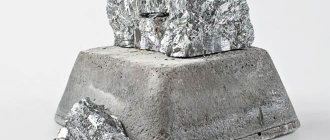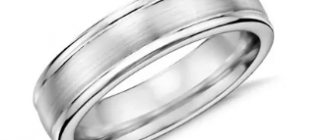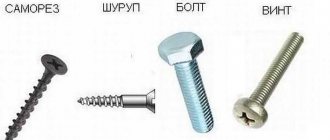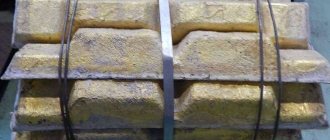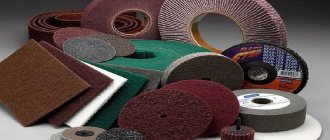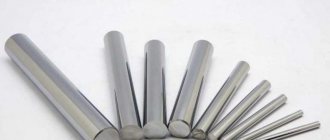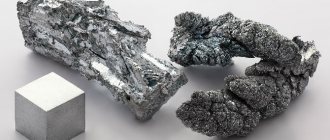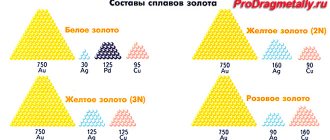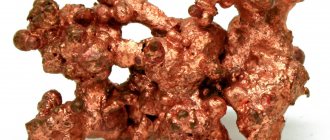Brass is a special copper-based alloy. The main additive of this alloy is zinc. According to the amount of zinc content in the alloy, brass is yellow - if 25-35% zinc is added, and red - if the alloy contains 5-15% zinc.
If you compare copper and brass, brass is more durable. Brass has higher corrosion resistance. This alloy has high mechanical and technological properties. Brass is a relatively cheap alloy. It is easy to process (cut, forge). The ancient Romans smelted brass from copper and zinc ore (galmaea). They were the first to use brass to make various household utensils - dishes, vases, statues, figurines of gods. It was from Ancient Rome that brass utensils began to spread throughout this world. First it was brought to China, India, then to Europe and Russia.
Brass is associated with the Sun, and in alchemy is designated by the solar symbol. This alloy has a wide range of applications: in jewelry, in the watch industry, in the automotive industry, in instrument making.
The magical properties of brass
Brass, like any other metal, has magical properties. If there were children in the family who were difficult to teach and had difficulty mastering literacy, then the parents turned to magicians, sorcerers, and witches. They, in turn, undertook to help the mountain - the students and did this with the help of brass. Brass has a positive effect on the learning process , brings harmony and tranquility to the development of new material, awakens interest in literacy and science, in understanding the world around us. If a special ritual is performed on a child using this miraculous alloy, then in the future he will show an undiminished interest in learning.
Brass is able to reconcile people , eliminate conflict situations, and smooth out disputes. Brass makes people more sociable, sociable, tolerant, responsive and merciful.
Brass has powerful protective properties . But it not only protects a person from damage, the evil eye, envy and other negativity, but also sends all the negativity back to the sender.
Many psychics and clairvoyants always carry pieces of brass with them. In this way, they maintain and develop their telepathic and psychic abilities.
Brass jewelry
Brass is an alloy of copper and aluminum. In appearance, traditional brass has a beautiful yellow tint and is very reminiscent of gold. And so much so that some unscrupulous sellers give out brass jewelry instead of gold.
“Yellow copper” is an ancient name for brass. The alloy may also have a greenish tint and resemble bronze. Much depends on the composition and proportions of the metals used. Nickel, zinc, manganese, tin and other components are often added to the alloy.
“Eternal metal” is what brass is called for its extraordinary wear resistance. Since ancient times, a variety of utensils have been made from durable brass in almost all parts of the world. Brass dishes were richly decorated and sometimes represented real masterpieces of artistic craft. Jewelry and interior items were also made from brass.
Products made from brass do not lose their original shape for decades. Thanks to this indicator and excellent visual characteristics, brass is very often used in costume jewelry - affordable cost, durability and presentable appearance.
The magical properties of brass
Brass combines the energy of Mercury and Venus. Suitable for almost all zodiac signs. Pisces and Virgos are advised not to wear brass very often.
Brass helps everyone who studies - it brings harmony to the learning process. Metal helps strengthen contacts between people and makes their communication more pleasant. Smoothes out conflicts and promotes mutual understanding.
Of the stones, it interacts best with blue and blue lapis lazuli. In combination with lapis lazuli, brass softens a person’s energy, reduces the degree of aggression in disputes, and gives peace.
Brass occupies a special place in the fantastically diverse world of jewelry. Brass jewelry looks very original and distinctive. Brass earrings, rings, pendants, brooches and bracelets are often covered with gold, silvered and blackened, which turns them into truly elite jewelry.
Very often used to create vintage jewelry - luxurious brooches, rings and earrings. In the production of costume jewelry, brass wire is often used, which bends and is highly durable.
Brass is widely used as a material for ethnic jewelry. Ethnic style drop earrings have been very popular in recent years. Old Russian rings and bright Slavic rings are engraved with ornaments with traditional Slavic symbols of protection.
Earrings made of brass and beads look very elegant. Dark quartz in brass looks noble and respectable. Bracelets and necklaces made of brass beads are beautiful and unusual.
Classic brass bracelets are distinguished by their monumentality and integrity of design. Brass bracelets made in ethnic style are very popular today. Graceful carved bracelets are suitable for girls and women who prefer extravagant jewelry. Brass medallions are a classic of the genre.
Where else is brass used? Instrument making, mechanical engineering, telecommunications industry, electrical engineering, shipbuilding, automotive industry, interior design - due to the fact that brass is a ductile, durable, affordable, corrosion-resistant metal with a very attractive appearance, it is widely used for the manufacture of decorative elements in decoration buildings.
How brass was used in Rus'
In Rus', brass products were exchanged for sable furs, which indicates that they were highly valued.
The cost of dishes, for example, was determined as follows: brass bowls, goblets and other items were filled with sable skins. How many of them were placed, the buyer must give them to the seller. Brass was used to make bracelets, rings, amulets and medallions, and was also widely used as a metal base for earrings. Women in Rus' wore massive dangling earrings with one, two or three rods, decorated with beads made of carnelian, pearls and other stones. Earrings were made in a round or star shape. Traditionally, they depicted the Sirin bird and other ancient Russian symbols. The princely-boyar nobility wore brass hryvnias around their necks - these are metal hoops or bracelet-shaped plates that were awarded to the best warriors for feats of arms.
Due to its good heat capacity, samovars, the most famous and very popular household utensils, were made from brass in Tsarist Russia. Brass samovars not only looked very bright and beautiful, but also heated up evenly, retaining heat for a long time - this is a very important property that made it possible not to melt them again, but to get boiling water and drink tea for hours.
Large brass teapots were made for traditional Russian sbiten, a healing hot drink brewed from honey and medicinal herbs. In cold weather, hot sbiten warmed well, and in hot weather it was served cool to quench thirst. Like Russian samovars, sbiten teapots were not just vessels, but rather complex devices, inside of which fireboxes were made of pipes filled with hot charcoal. Such beautiful teapots kept healing drinks hot for a long time even in severe frosts.
In Rus', brass was used to make crosses, church utensils, squares and other decorations for books, as well as orders and medals. In addition to dishes, Ural factories produced many other items from brass. For example, such interesting products as frames for compasses and cases for magnets. Brass has a unique property - it is not magnetized at all. Magnets in skillful and very beautiful brass frames were the eternal companions of Russian pioneers, navigators, engineers, scientists, etc.
In 1818, a monument to Minin and Pozharsky in Moscow was cast from brass and copper, which is still one of the main symbols of the Russian capital.
How to clean brass
One of the proven ancient means of cleaning brass and copper products is “vinegar dough”. To do this, mix flour and salt in equal parts, add vinegar and knead the dough. Then apply the dough to the surface of the product, let it dry, and after a couple of hours clean it with a brush or cloth. The product will appear before you in its original form! It is recommended to periodically polish the surfaces of brass jewelry using a piece of flannel and a special mixture: 10% ammonia (30 g), tooth powder (15 g) and cold water (50 g).
If worn constantly, it is recommended to clean brass jewelry at least once a month. You should also wipe them down each time you remove them to remove any remaining marks from contact with the skin.
Healing properties of brass
In addition to magical properties, brass also has healing properties . Brass effectively eliminates headaches and fights migraines. Vases and figurines made of brass, located in the house, will contribute to enlightenment and strengthening of mental abilities. It is advisable to have such products in your offices at your workplace. Then performance will increase, its quality level will increase. Brass will facilitate soft, non-conflict communication with colleagues and the boss.
If you apply a piece of yellow or red brass to the sore spot, the pain will gradually go away. Thus, radiculitis, neuritis, arthritis, sore joints, damaged tendons, bruises, ingrown nails, bruises, and abrasions can be treated. Hematomas resolve faster, and abrasions and small wounds or cuts heal faster.
Brass can be used to charge water . After all, the alloy contains copper. A piece of brass should be thrown into a container of water and left. Water charged in this way cleanses the body of toxins, normalizes the functioning of the small and large intestines; kills pathogenic microbes. Brass water can rid the human body of parasites and putrefactive bacteria. Therefore, such water should be given to young children as a preventive measure in the fight against helminthic infestations.
How to deal with poisoning
In our age of development of science and technology, copper is used less and less, and it is now almost impossible to get poisoned by accidentally pouring soup into a copper plate: most cases were recorded in the mid-to-late 20th century. However, caution should be exercised when using copper or brass mods and atomizers: there are known cases of group poisoning with copper almost “out of the blue.” If symptoms occur, you should seek medical help, go out into the fresh air, take a horizontal position - and drink strong tea. Just don't brew it in copper containers.
Authors: Aldian Dadyanov and Ivan Romanchuk.
Typo - Ctrl + Enter July 4, 2021, 2:54 pm
For the first time, water supply appeared in Ancient Rome. For its time, this was one of the greatest inventions that brought hitherto unimaginable comfort into people's lives. But along with it, the water supply also brought some problems. The main one was the high incidence. The very word “Plumbing” indicates the culprit. In Latin, plumbing is called "plumbing". The fact is that the pipes of the Roman water supply were made of lead, which provokes diseases. Since then, humanity has begun to take its health more seriously, and the water supply systems of our cities have become many times safer than those of ancient Rome. Lead in pipes was replaced with more environmentally friendly steel, and then with plastic. However, it turned out to be impossible to completely get rid of this toxic metal.
The second most commonly used metal in plumbing and heating systems after steel is brass. In our country, since the times of the Soviet Union, brass of the LS-59 grade has been used, the lead content of which is 2%. Until recently, the situation was the same in other countries. But in recent decades the situation has been changing rapidly. Strict standards are being introduced to regulate the content of hazardous substances, including lead, in water supply systems. The latest, and most stringent, restriction was the ban in the United States from installing equipment and materials containing more than 0.25% lead in networks used for drinking water. The ban came into force at the beginning of 2014. This is one of the most stringent restrictions on lead use to date.
But if the danger from lead-containing brass is so great, why not abandon it altogether? Moreover, attempts are being made.
Connection of brass with astrological signs of the zodiac
Brass has long been considered the metal of Truth, Truth and Justice. Products made from this amazing alloy can be worn by all signs of the zodiac circle, except Virgo and Capricorn. Brass is especially suitable for Aquarius (Air element). Brass will give all representatives of the zodiac signs true love, interest in life, creativity, and science. Brass is especially suitable for those signs of the zodiac circle who are waiting for changes in life for the better, who want to radically change their lives for the better.
